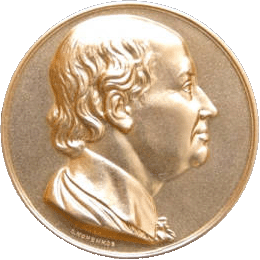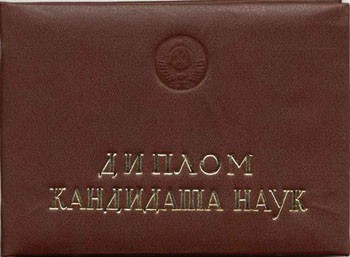|
Anatoly Alexandrov (physicist)
Anatoly Petrovich Alexandrov (russian: Анатолий Петрович Александров, 13 February 1903–3 February 1994), also known as A.P. Alexandrov, , was a Russian physicist who played a crucial and centralizing role in the former Soviet program of nuclear weapons. During his lifetime, Alexandrov was the recipient of many honors, civil citations, and state awards for this work and was also the director of the Kurchatov Institute and the President of the Soviet Academy of Sciences from 1975 until 1986. Early life Anatoly Alexandrov was born on 13 February 1903 into the family of a prominent judge in the town of Tarashcha, Kiev Governorate, Russian Empire (now located in modern-day Ukraine). In 1919, at the height of the Russian Civil War, Alexandrov graduated from high school in Kiev. The certificate gave the right to enter the university at the physics and mathematics or medical faculty. When the Red Army captured Kiev on February 5, 1919, Alexandrov and a ... [...More Info...] [...Related Items...] OR: [Wikipedia] [Google] [Baidu] |
Tarashcha
Tarashcha or Tarascha ( uk, Тараща, yi, טאַראַשטשע) is a city in Bila Tserkva Raion, Kyiv Oblast (region) in central Ukraine. It hosts the administration of Tarashcha urban hromada, one of the hromadas of Ukraine. Population: . History Tarashcha is an historic Cossack town (in the 17th century through 17th century - rather a city). It was founded when the area was under the ultimate control of the Polish–Lithuanian Commonwealth. Until the mid-20th century, the town had a significant Jewish community, being a shtetl. The town was occupied by the German army on July 23, 1941. Jews were forced to wear armbands with the Star of David, were not allowed to buy food and were relegated to forced labour. Afterward, a ghetto was established on Tarasha Street. Executions of the Jewish population were carried out by German security forces, S.S. Viking Division, detachment of Einsatzgruppe, in cooperation with Einsatzkommando 5 and local police. The execution of Jews st ... [...More Info...] [...Related Items...] OR: [Wikipedia] [Google] [Baidu] |
Soviet Atomic Bomb Project
The Soviet atomic bomb project was the classified research and development program that was authorized by Joseph Stalin in the Soviet Union to develop nuclear weapons during and after World War II. Although the Soviet scientific community discussed the possibility of an atomic bomb throughout the 1930s, going as far as making a concrete proposal to develop such a weapon in 1940, the full-scale program was not initiated and prioritized until Operation Barbarossa. Because of the conspicuous silence of the scientific publications on the subject of nuclear fission by German, American, and British scientists, Russian physicist Georgy Flyorov suspected that the Allied powers had secretly been developing a "superweapon" since 1939. Flyorov wrote a letter to Stalin urging him to start this program in 1942. Initial efforts were slowed due to the German invasion of the Soviet Union and remained largely composed of the intelligence gathering from the Soviet spy rings working in the U. ... [...More Info...] [...Related Items...] OR: [Wikipedia] [Google] [Baidu] |
Academy Of Sciences Of The Soviet Union
The Academy of Sciences of the Soviet Union was the highest scientific institution of the Soviet Union from 1925 to 1991, uniting the country's leading scientists, subordinated directly to the Council of Ministers of the Soviet Union (until 1946 – to the Council of People's Commissars of the Soviet Union). In 1991, by the decree of the President of the Russian Soviet Federative Socialist Republic, the Russian Academy of Sciences was established on the basis of the Academy of Sciences of the Soviet Union. History Creation of the Academy of Sciences of the Soviet Union The Academy of Sciences of the Soviet Union was formed by a resolution of the Central Executive Committee and the Council of People's Commissars of the Soviet Union dated July 27, 1925 on the basis of the Russian Academy of Sciences (before the February Revolution – the Imperial Saint Petersburg Academy of Sciences). In the first years of Soviet Russia, the Institute of the Academy of Sciences was perceived ra ... [...More Info...] [...Related Items...] OR: [Wikipedia] [Google] [Baidu] |
Russia
Russia (, , ), or the Russian Federation, is a List of transcontinental countries, transcontinental country spanning Eastern Europe and North Asia, Northern Asia. It is the List of countries and dependencies by area, largest country in the world, with its internationally recognised territory covering , and encompassing one-eighth of Earth's inhabitable landmass. Russia extends across Time in Russia, eleven time zones and shares Borders of Russia, land boundaries with fourteen countries, more than List of countries and territories by land borders, any other country but China. It is the List of countries and dependencies by population, world's ninth-most populous country and List of European countries by population, Europe's most populous country, with a population of 146 million people. The country's capital and List of cities and towns in Russia by population, largest city is Moscow, the List of European cities by population within city limits, largest city entirely within E ... [...More Info...] [...Related Items...] OR: [Wikipedia] [Google] [Baidu] |
Candidate Of Sciences
Candidate of Sciences (russian: кандидат наук, translit=kandidat nauk) is the first of two doctoral level scientific degrees in Russia and the Commonwealth of Independent States. It is formally classified as UNESCO's ISCED level 8, "doctoral or equivalent". It may be recognized as Doctor of Philosophy, usually in natural sciences, by scientific institutions in other countries. Former Soviet countries also have a more advanced degree, Doctor of Sciences. Overview The degree was first introduced in the USSR on 13 January 1934 by a decision of the Council of People's Commissars of the USSR, all previous degrees, ranks and titles having been abolished immediately after the October Revolution in 1917. Academic distinctions and ranks were viewed as survivals of capitalist inequality and hence were to be permanently eliminated. The original decree also recognized some degrees earned prior to 1917 in Tsarist Russia and elsewhere. To attain the Candidate of Sciences de ... [...More Info...] [...Related Items...] OR: [Wikipedia] [Google] [Baidu] |
Eugene Alexandrov
Eugene Borisovich Alexandrov (russian: Евгений Борисович Александров, born April 13, 1936 in Leningrad,Александров Евгений Борисович (in Russian) ) is a Russian physicist, member of the (since 1992), |
USSR State Prize
The USSR State Prize (russian: links=no, Государственная премия СССР, Gosudarstvennaya premiya SSSR) was the Soviet Union's state honor. It was established on 9 September 1966. After the dissolution of the Soviet Union, the prize was followed up by the State Prize of the Russian Federation. The State Stalin Prize ( Государственная Сталинская премия, ''Gosudarstvennaya Stalinskaya premiya''), usually called the Stalin Prize, existed from 1941 to 1954, although some sources give a termination date of 1952. It essentially played the same role; therefore upon the establishment of the USSR State Prize, the diplomas and badges of the recipients of Stalin Prize were changed to that of USSR State Prize. In 1944 and 1945, the last two years of the Second World War, the award ceremonies for the Stalin Prize were not held. Instead, in 1946 the ceremony was held twice: in January for the works created in 1943–1944 and in June for the ... [...More Info...] [...Related Items...] OR: [Wikipedia] [Google] [Baidu] |
Medal State Prize Soviet Union
A medal or medallion is a small portable artistic object, a thin disc, normally of metal, carrying a design, usually on both sides. They typically have a commemorative purpose of some kind, and many are presented as awards. They may be intended to be worn, suspended from clothing or jewellery in some way, although this has not always been the case. They may be struck like a coin by dies or die-cast in a mould. A medal may be awarded to a person or organisation as a form of recognition for sporting, military, scientific, cultural, academic, or various other achievements. Military awards and decorations are more precise terms for certain types of state decoration. Medals may also be created for sale to commemorate particular individuals or events, or as works of artistic expression in their own right. In the past, medals commissioned for an individual, typically with their portrait, were often used as a form of diplomatic or personal gift, with no sense of being an award for ... [...More Info...] [...Related Items...] OR: [Wikipedia] [Google] [Baidu] |
Lenin Prize Medal
Vladimir Ilyich Ulyanov. ( 1870 – 21 January 1924), better known as Vladimir Lenin,. was a Russian revolutionary, politician, and political theorist. He served as the first and founding Chairman of the Council of People's Commissars of the Soviet Union, head of government of Soviet Russia from 1917 to 1924 and of the Soviet Union from 1922 to 1924. Under his administration, Russia, and later the Soviet Union, became a one-party socialist state governed by the Communist Party of the Soviet Union, Communist Party. Ideologically a Marxism, Marxist, his developments to the ideology are called Leninism. Born to an Upper middle class, upper-middle-class family in Ulyanovsk, Simbirsk, Lenin embraced Revolutionary socialism, revolutionary socialist politics following Aleksandr Ulyanov, his brother's 1887 execution. Expelled from Kazan (Volga region) Federal University, Kazan Imperial University for participating in protests against the Russian Empire's Tsarist autocracy, Tsarist ... [...More Info...] [...Related Items...] OR: [Wikipedia] [Google] [Baidu] |
Hero Of Socialist Labor
The Hero of Socialist Labour (russian: links=no, Герой Социалистического Труда, Geroy Sotsialisticheskogo Truda) was an honorific title in the Soviet Union and other Warsaw Pact countries from 1938 to 1991. It represented the highest degree of distinction in the USSR and was awarded for exceptional achievements in Soviet industry and culture. It provided a similar status to the title of Hero of the Soviet Union, which was awarded for heroic deeds, but differed in that it was not awarded to foreign citizens. History The Title "Hero of Socialist Labour" was introduced by decree of the Presidium of the Supreme Soviet of the Soviet Union on December 27, 1938. Originally, Heroes of Socialist Labour were awarded the highest decoration of the Soviet Union, the Order of Lenin, and a diploma from the Presidium of the Supreme Soviet of the Soviet Union. In order to distinguish the Heroes of Socialist Labour from other Order of Lenin recipients, the "Hammer a ... [...More Info...] [...Related Items...] OR: [Wikipedia] [Google] [Baidu] |
Sickle And Hammer
The hammer and sickle (Unicode: "☭") zh, s=锤子和镰刀, p=Chuízi hé liándāo or zh, s=镰刀锤子, p=Liándāo chuízi, labels=no is a symbol meant to represent proletarian solidarity, a union between agricultural and industrial workers. It was first adopted during the Russian Revolution at the end of World War I, the hammer representing workers and the sickle representing the peasants. After World War I (from which Russia withdrew in 1917) and the Russian Civil War, the hammer and sickle became more widely used as a symbol for labor within the Soviet Union and for international proletarian unity. It was taken up by many communist movements around the world, some with local variations. Following the dissolution of the Soviet Union at the end of the Cold War, the hammer and sickle remains commonplace in Russia itself and other former Soviet republics. In some other former communist countries, as well as in countries where communism is banned by law, its display ... [...More Info...] [...Related Items...] OR: [Wikipedia] [Google] [Baidu] |





.jpg)